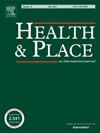Crossing waters, crossing divides: A qualitative exploration of patient navigation experiences in Philippine Island communities
IF 4.1
2区 医学
Q1 PUBLIC, ENVIRONMENTAL & OCCUPATIONAL HEALTH
引用次数: 0
Abstract
Navigating healthcare systems registers unique challenges in geographically isolated areas, where physical barriers and spatial inequities influence access to care. Patient navigation is well positioned to address these persistent health disparities, however, services remain scant in island communities of the Philippines. This study employs a situated intersectionality framework to investigate how place intersects with individual characteristics and social resources to drive patient navigation experiences in these geographically disadvantaged areas, examining the dynamic interactions between physical isolation, digital connectivity, social networks, and healthcare access. Through a relational understanding of health and place, this study utilized purposive sampling to invite participants for four focus group discussions and six key informant interviews. Thematic analysis revealed several key dimensions of patient navigation in this geographical context, including how digital navigation services help overcome geographical barriers while simultaneously creating new forms of inequality based on technological access and capability; how community resources and social capital create virtual bridges to mainland healthcare facilities; and how navigation services reduce the temporal and economic burdens unique to island settings. The analysis demonstrated how these factors interact differently across demographic groups and spatial locations within the island context. These findings elucidate how geographical context cuts through individual and social factors to create both opportunities and constraints in healthcare navigation, demonstrating the value of situated intersectionality in understanding how multiple forms of disadvantage traverse within specific spatial contexts. Recommendations include place-sensitive institutionalization of patient navigation services, strategic investment in geographically distributed technological infrastructure, and strengthening community-based navigation support systems to ensure effectiveness and sustainability of such endeavors in island communities.
跨越水域,跨越鸿沟:菲律宾岛屿社区患者导航体验的定性探索
在地理上孤立的地区,物理障碍和空间不平等影响了获得医疗服务的机会,在卫生保健系统中导航面临着独特的挑战。患者导航很好地解决了这些持续存在的健康差异,然而,菲律宾岛屿社区的服务仍然不足。本研究采用位置交叉性框架来研究地点如何与个人特征和社会资源相交,以驱动这些地理位置不利地区的患者导航体验,研究物理隔离,数字连接,社交网络和医疗保健访问之间的动态相互作用。通过对健康和场所的关系理解,本研究采用有目的的抽样方法邀请参与者进行4次焦点小组讨论和6次关键信息提供者访谈。专题分析揭示了这一地理背景下患者导航的几个关键方面,包括数字导航服务如何帮助克服地理障碍,同时基于技术获取和能力创造新的不平等形式;社区资源和社会资本如何搭建通往内地医疗机构的虚拟桥梁;以及导航服务如何减轻岛屿环境特有的时间和经济负担。分析表明,这些因素如何在岛屿范围内不同人口群体和空间位置之间产生不同的相互作用。这些发现阐明了地理环境如何通过个人和社会因素在医疗保健导航中创造机会和限制,展示了位置交叉性在理解多种形式的劣势如何在特定空间环境中传播方面的价值。建议包括将病人导航服务制度化,对地理分布的技术基础设施进行战略投资,并加强以社区为基础的导航支持系统,以确保这种努力在岛屿社区的有效性和可持续性。
本文章由计算机程序翻译,如有差异,请以英文原文为准。
求助全文
约1分钟内获得全文
求助全文
来源期刊

Health & Place
PUBLIC, ENVIRONMENTAL & OCCUPATIONAL HEALTH-
CiteScore
7.70
自引率
6.20%
发文量
176
审稿时长
29 days
期刊介绍:
he journal is an interdisciplinary journal dedicated to the study of all aspects of health and health care in which place or location matters.
 求助内容:
求助内容: 应助结果提醒方式:
应助结果提醒方式:


